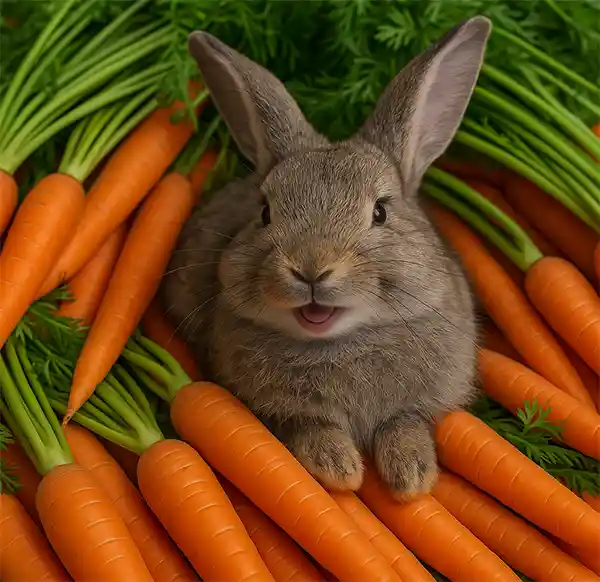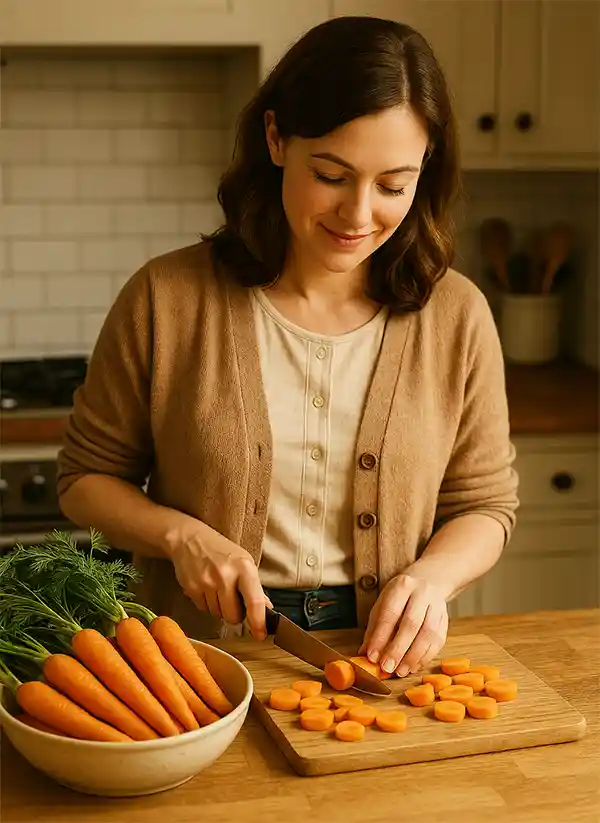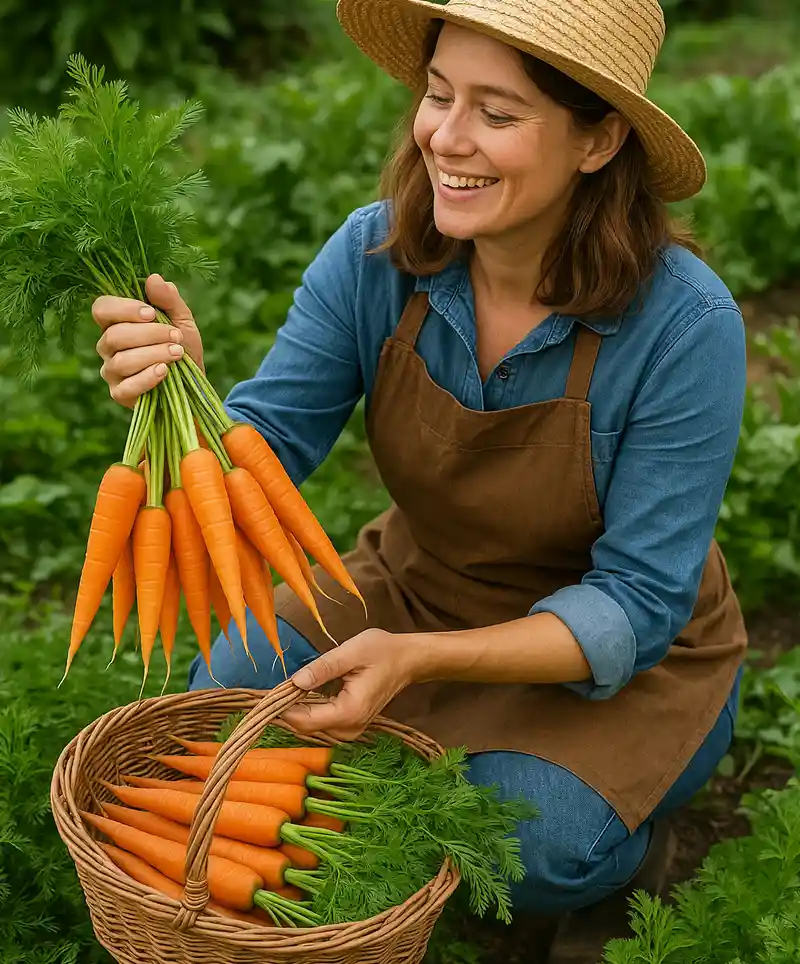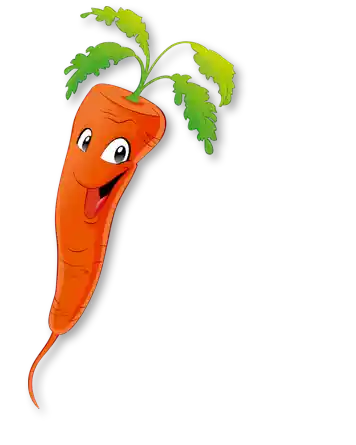 A Root Awakening!
A Root Awakening!
Every April 4th, people around the globe take a moment to celebrate the humble, crunchy, vitamin-packed carrot. It’s International Carrot Day—a time to give this orange (and sometimes purple, yellow, or white) root vegetable the recognition it deserves. Whether you're a Bugs Bunny wannabe or just someone who likes their veggies with a side of sass, this day is all about embracing the carrot in all its crispy glory.
More Than Just Rabbit Food
Carrots may be the poster veggie for healthy snacking today, but their roots (pun totally intended) go much deeper than a ranch-dipping side dish. Long before baby carrots were vacuum-sealed into supermarket snack packs, the carrot’s journey began in the dry soils of Persia around 1000 AD.
Back then, people weren’t even interested in the root! They were after the fragrant leaves and seeds, using them for medicinal and culinary purposes. The earliest cultivated carrots were thin, pale, and slightly bitter—definitely not something you'd want to dip in hummus. These ancient carrots came in shades of purple and yellow and were about as orange as a snowstorm.
It wasn’t until the 16th century that Dutch farmers allegedly decided to play carrot matchmakers. They bred the yellow variety into the sweet, chubby, orange versions we know today. Some say they did this to honor William of Orange, the founding father of the Netherlands. Whether out of national pride or pure agricultural wizardry, they created a root that was sweeter, less woody, and much more photogenic. Thank you, Netherlands—because let's be honest, purple carrot cake just doesn’t have the same vibe.
During World War II, carrots had another moment in the spotlight. The British government launched a propaganda campaign suggesting that eating lots of carrots helped pilots see in the dark. The real reason was to cover up radar technology developments, but the carrot myth stuck. To this day, parents use the “carrots help your eyesight” line, and while it’s not entirely false—carrots are rich in beta-carotene, a precursor to vitamin A, which is good for vision—it’s not going to give you superhero night vision. You’ll still stub your toe on the coffee table.
In some cultures, carrots even made their way into desserts long before modern carrot cake. In medieval Europe, when sugar was expensive and rare, carrots became a popular natural sweetener. So yes, your great-great-great-great grandma may have been the original carrot cake influencer.
And let’s not forget carrots’ global glow-up. Today, you can find rainbow carrots at farmer’s markets and gourmet stores—vibrant red, purple, yellow, and white varieties that look like they just walked off the runway at Veggie Fashion Week. These heirloom varieties are not only eye-catching but also offer slightly different flavors—some earthier, some sweeter, all fabulous.
So no, carrots are not just rabbit food. They are historically significant, globally respected, nutritionally powerful, and occasionally responsible for turning small children orange. What more could you ask from a root?
Fun Carrot Facts That Will Make You Say, “No Way!”
Sure, carrots are a staple in lunchboxes and side dishes, but there's more to these crunchy wonders than meets the eye. Beneath their bright skin lies a treasure trove of wild and wacky facts that just might make you do a double take. From record-breaking roots to unintentional spray tans, carrots have a surprisingly colorful resume. Ready to have your mind blown by a vegetable? Buckle up, because these carrot facts are anything but ordinary.
- Carrots are about 88% water, making them crunchy little hydrators.
- Eating too many carrots can turn your skin orange. It’s a harmless condition called carotenemia—or as we like to call it, the Cheeto effect.
- The world’s heaviest carrot weighed over 22 pounds. We assume it had its own zip code.
- Carrots were once considered a cure for just about everything—snakebites, warts, even evil spirits. Basically, they were the duct tape of the medieval medicine cabinet.
 Carrots by the Numbers
Carrots by the Numbers
According to the Food and Agriculture Organization (FAO), over 40 million tons of carrots are grown each year worldwide. China leads the charge, producing nearly half of the global supply. The United States comes in a respectable fourth, proving we know how to grow a good snack stick.
Cooking with Carrots: More Than Just Crudités
Carrots are the chameleons of the vegetable drawer. You can roast them, boil them, steam them, shred them into a cake (which technically makes it a vegetable, right?), or juice them for a vitamin-A-rich drink that tastes suspiciously like garden dirt. But we digress. Carrots play nice with honey, ginger, cumin, and even citrus—basically, they’re the extroverts of the veggie world.
What to Do Besides Chew
So, how do you celebrate International Carrot Day? Well, here are a few ideas:
- Have a carrot-themed potluck. Bonus points if someone brings carrot lasagna. (Yes, it exists.)
- Grow your own carrots. They’re surprisingly easy to plant, and pulling them out of the ground is more satisfying than popping bubble wrap.
- Host a carrot cosplay contest. Dogs, cats, kids—dress ‘em all up like root veggies and post it online for instant fame.
- Make carrot crafts. Carrot stamps, carrot jewelry, carrot hats. You’re only limited by your glue gun and your dignity.
Carrots in Pop Culture
Carrots might not have their own Hollywood Walk of Fame star (yet), but they’ve managed to burrow their way into pop culture with surprising flair. These vibrant veggies have popped up in cartoons, comics, commercials, and even fashion—with more charisma than most reality TV stars.
Let’s start with the obvious: Bugs Bunny. Possibly the most iconic carrot muncher in history, Bugs didn’t just nibble on his signature snack—he made it a personality trait. With a casual lean and a “What’s up, Doc?” he turned carrot-eating into a form of casual rebellion. Fun fact: the chomping carrot routine was inspired by Clark Gable’s character in It Happened One Night (1934), who eats a carrot while talking—though Gable was considerably less animated.
But Bugs isn’t the only one. Carrots have also played supporting roles in other animated worlds. In VeggieTales, while carrots didn’t get top billing (sorry, Bob the Tomato), they were part of the vegetable ensemble, proving that even in Christian-themed cartoons, carrots have a place.
Let’s not forget Peter Rabbit, the mischievous bunny created by Beatrix Potter, whose entire plotline hinges on raiding Mr. McGregor’s garden—carrots very much included. Carrots are basically Peter’s motivation and downfall rolled into one orange root. If rabbits had rap sheets, Peter’s would read: “Carrot Theft—Repeated Offense.”
Carrots even pop up in unexpected places. Remember those Scandinavian holiday commercials that went viral? One year, a love-struck carrot character stole hearts as it journeyed across a snowy landscape to reunite with its Christmas dinner soulmate. Heartwarming and a little dark—but undeniably memorable.
Fashion, too, has flirted with the carrot. From quirky vegetable prints on high-end runways to novelty carrot earrings and tote bags, this humble root has been embraced as a symbol of health, whimsy, and a not-so-subtle reminder to eat your veggies.
And let’s not forget the internet. Carrots have become meme material—whether it’s a dog refusing to eat one, a “carrot fail” from a garden that grew... suggestively... or someone proudly sharing their foot-long homegrown prize on Reddit. The carrot, it seems, is always trending somewhere.
So, whether they’re being crunched in a cartoon, swiped from a fictional garden, or turned into ironic accessories by influencers, carrots continue to hold their own in pop culture. Not bad for a vegetable that used to be grown for its leaves!
One Last Bite
Whether you eat them raw, roasted, or ribboned into a salad, carrots are more than just rabbit snacks—they’re historical, versatile, and packed with more beta-carotene than you can shake a stick at. On April 4th, give carrots the love they’ve earned—just maybe don’t go full Bugs Bunny unless you’re prepared to commit to the voice.
Happy International Carrot Day!
Please Share our Content






 A Root Awakening!
A Root Awakening! Carrots by the Numbers
Carrots by the Numbers








 "Sláinte!" is a traditional Irish expression used as a toast, equivalent to "Cheers!" in English.
"Sláinte!" is a traditional Irish expression used as a toast, equivalent to "Cheers!" in English.